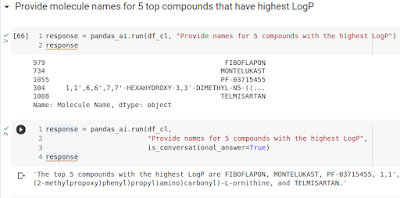ChatGPT will bring revolution to knowledge management and insight generation. Are we ready for this?
I have never done a cyclic peptide design in my life. So, when I was approached with a question on how to optimize the permeability of one, I guessed that more lipophilicity would help, and likely there are some specific neutral "vectors" that will also help. But the usual step is to go thru several papers and get the answer, obvious, right? I started with a very good article : "Optimizing PK properties of cyclic peptides: the effect of side chain substitutions on permeability and clearance". Read it, made conclusions and decided to feed it to ChatGPT (3.5) with request to "please extract very concise medicinal chemistry insights that can be further reused for peptide optimization". Here is what I got and and that was very neat: 1. Modification of peptide side chains significantly alters their log D values and subsequently their in vitro properties. For instance, aromatic or polar aliphatic side chains didn't significantly reduce log D, whereas ioniz...

